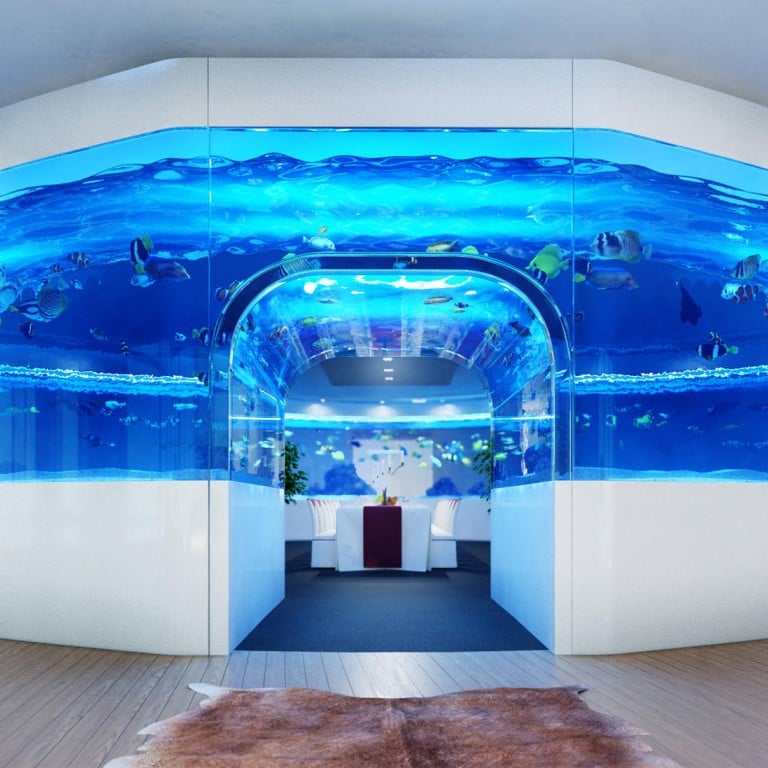HK$11.66 million: the ultimate aquarium

Entertain guests with a wrap-around fish tank
Why settle for goldfish in a jar when you can have the ocean in your home? These days, aquarists are taking their passions to new depths as they explore the many possibilities inherent with a fish tank, such as a dance floor, bathroom sink, coffee table or even a bus-stop billboard.
Last year, British luxury gadget designer Stuart Hughes designed the Aquavista Dinosaur Gold, made from a piece of T-rex bone that costs close to US$4.9 million - though some might consider it too small and simple-looking for such a price tag.
For those who really want to amaze family and friends, Bruce and his team at Red Fin designed a room within an aquarium. "We wanted the owner to feel like they were surrounded by the ocean, so we created a circular-shaped aquarium with no corners to detract from the feeling of immersion. The inner space is 10 metres wide, which means a floor space of more than 75 square metres that can be used for dining and parties, or even live music and dancing," Bruce says.

"There are large, eye-catching fish, like the queen angelfish and emperor angelfish, and also huge schools of smaller fish like anthias and chromis, which offer some of the most striking sights on the reef when moving in unison. We also included hundreds of different gobies, blennies and other small fish," Bruce says.
The corals that line the aquarium floor are grown from small clippings known as "frags", harvested from reefs. "Most of these would be Scleractinia [stony coral] chosen for their bright colours; we also included some alcyonacea to help mimic a natural environment."
A range of shrimp, crabs, clams, anemones, sea cucumbers, small lobsters, urchins and snails are included to enliven the scene and maintain a balanced ecosystem. "Aquarium owners are often very conscious of where the livestock is sourced from, and it is important to them that the fish and invertebrates are aquacultured or collected under sustainable quotas," says Bruce, who has built tanks for everything from giant Pacific octopus to jellyfish.